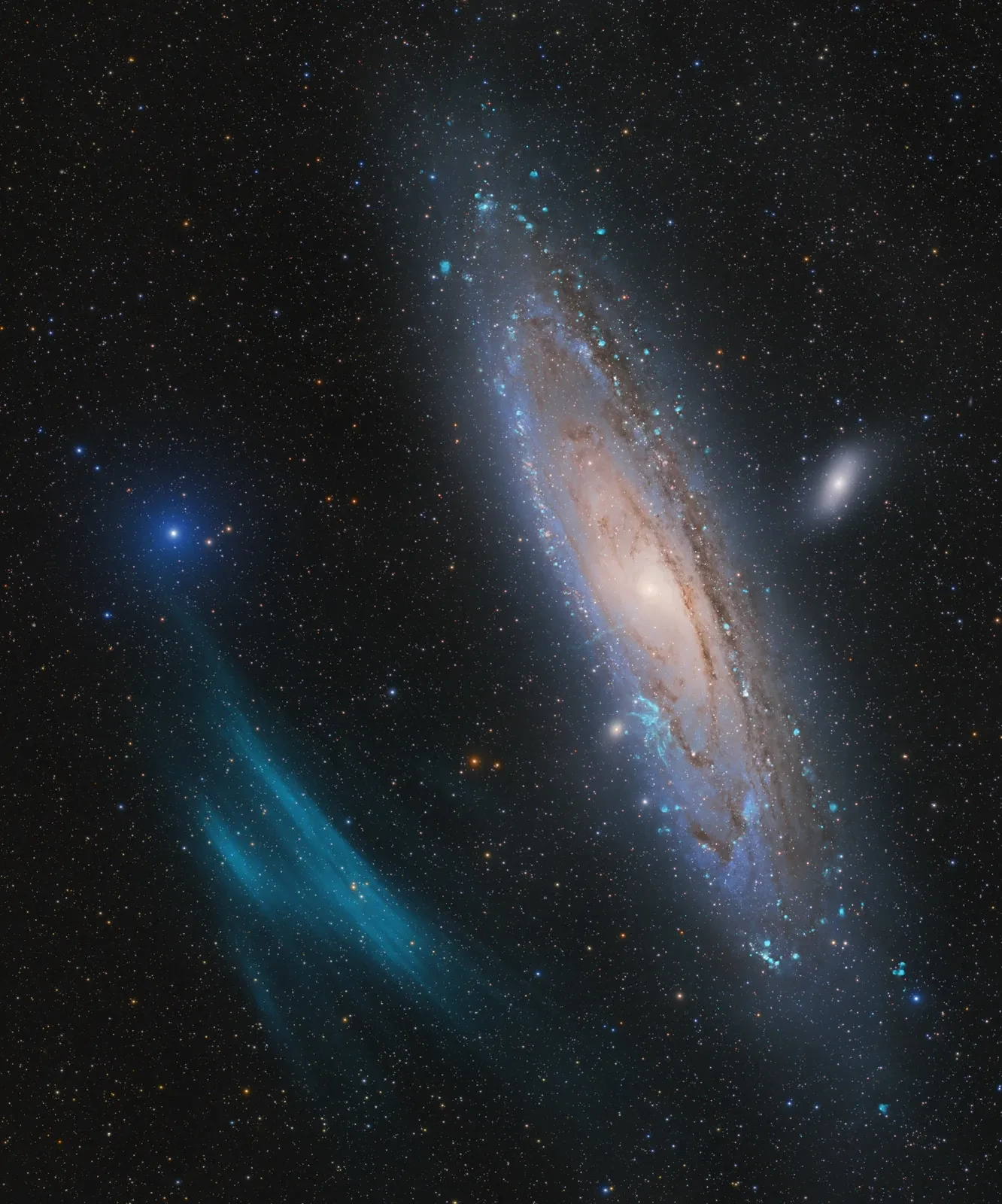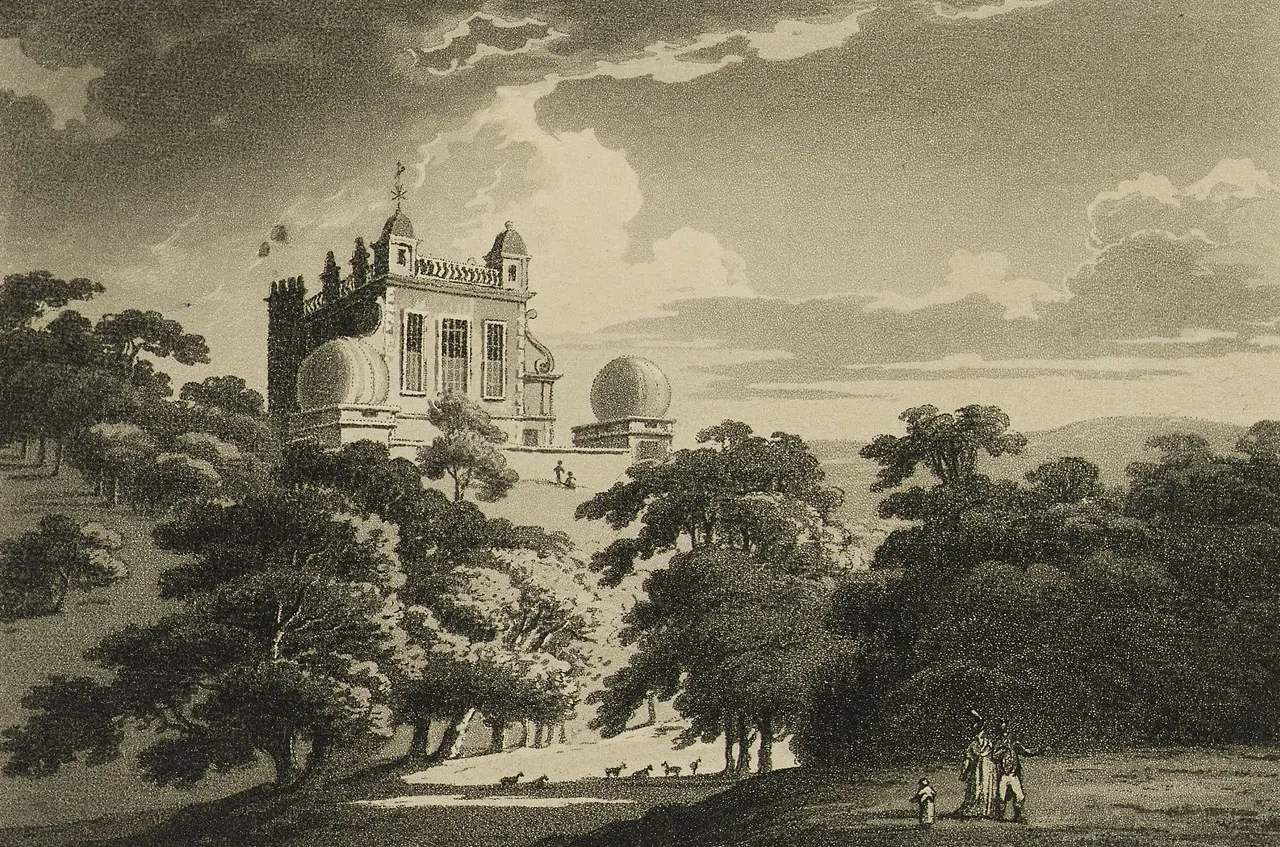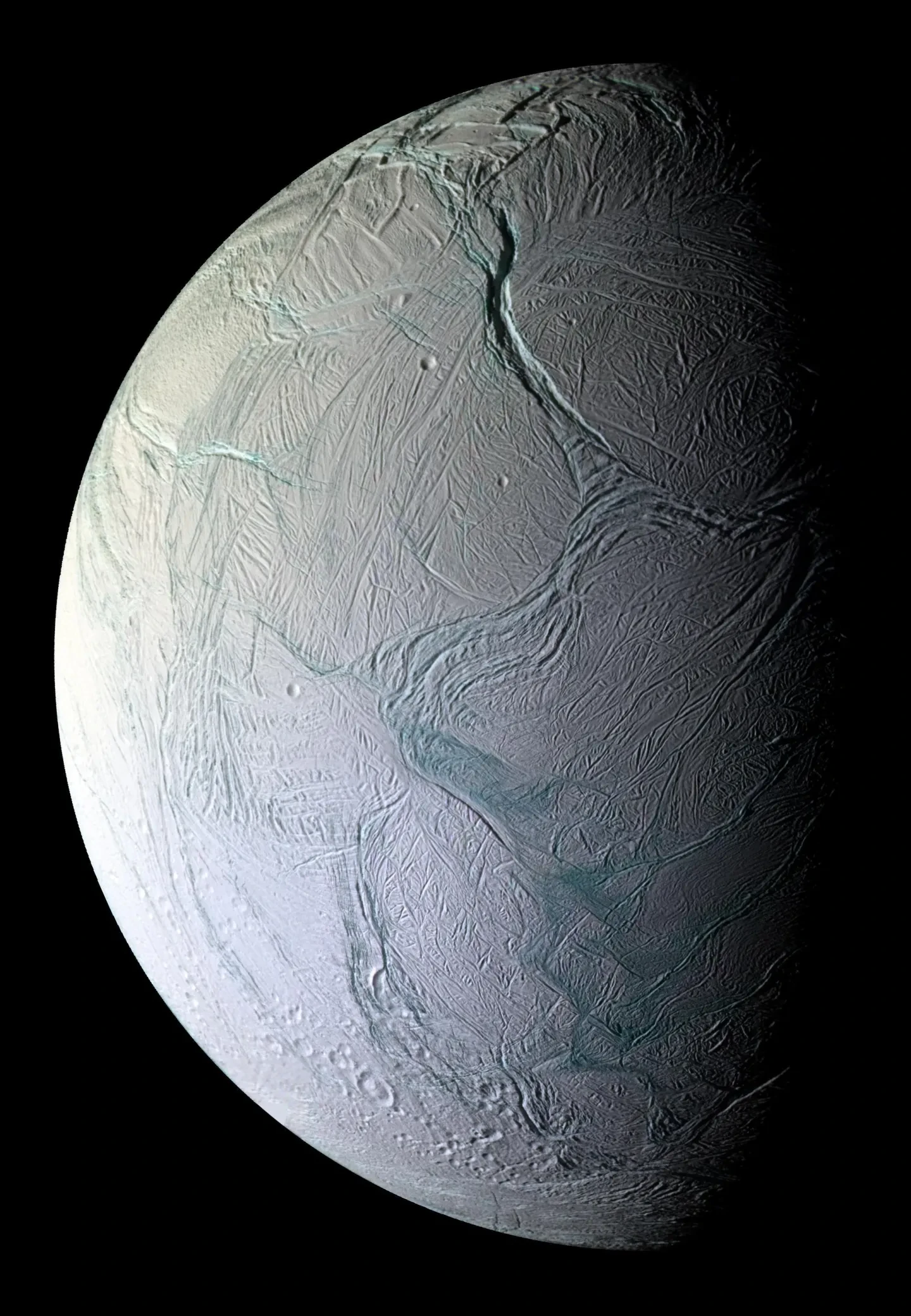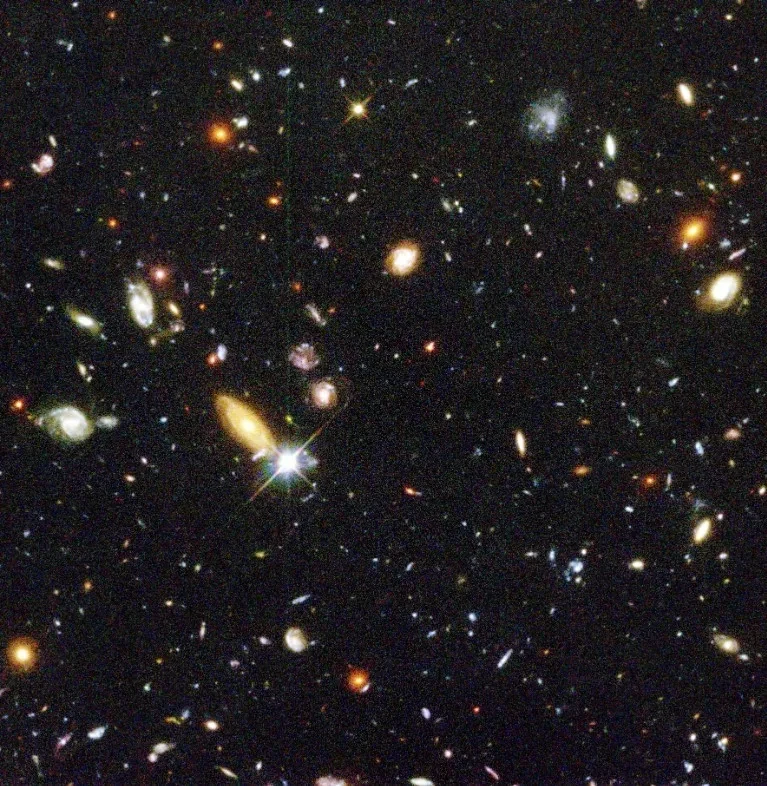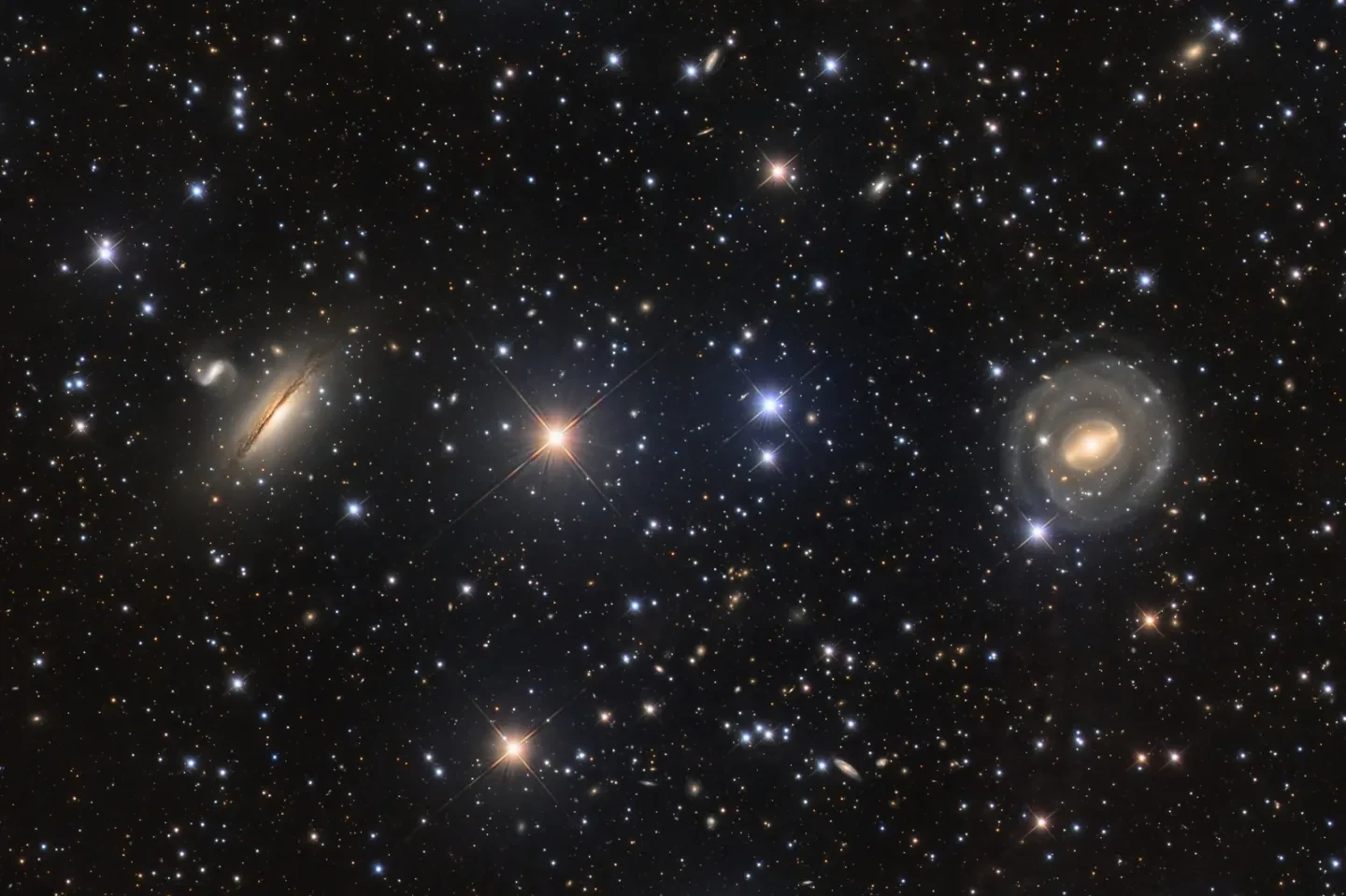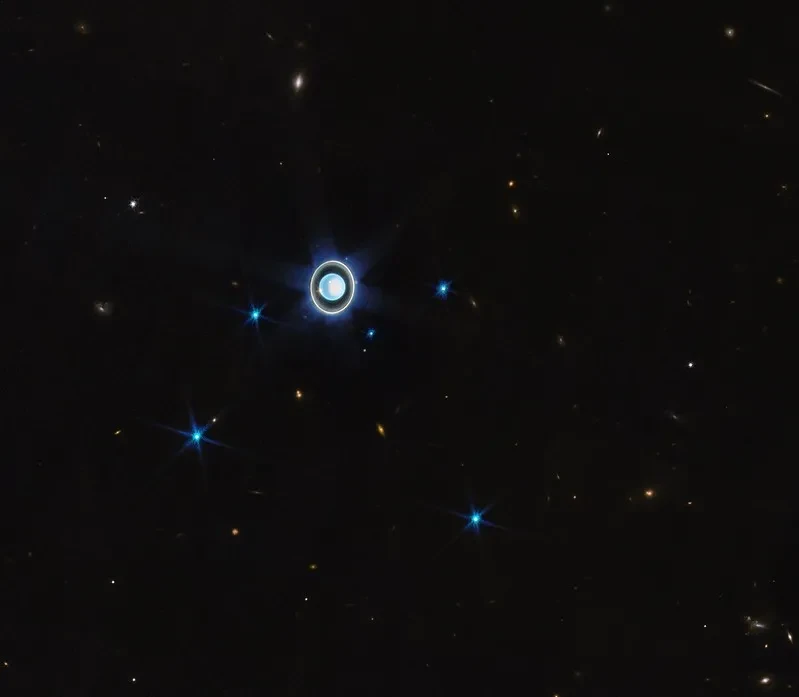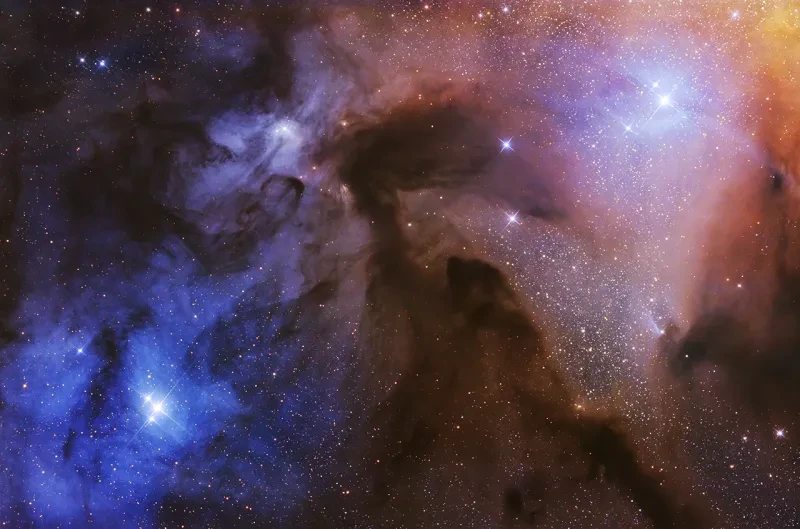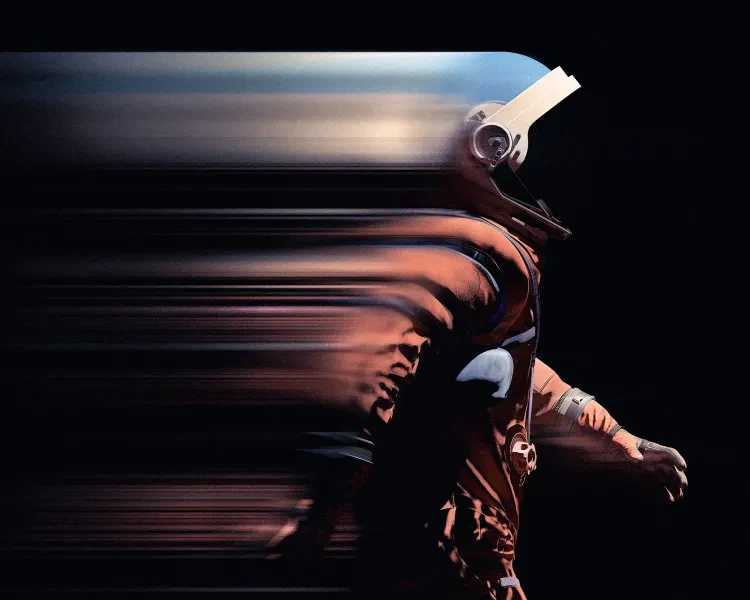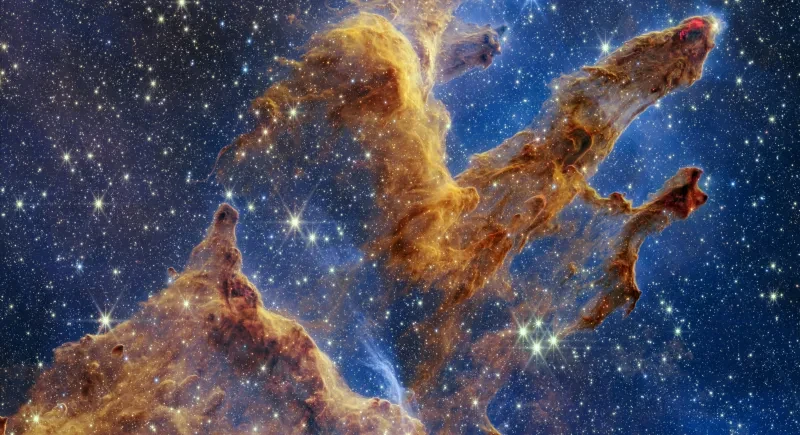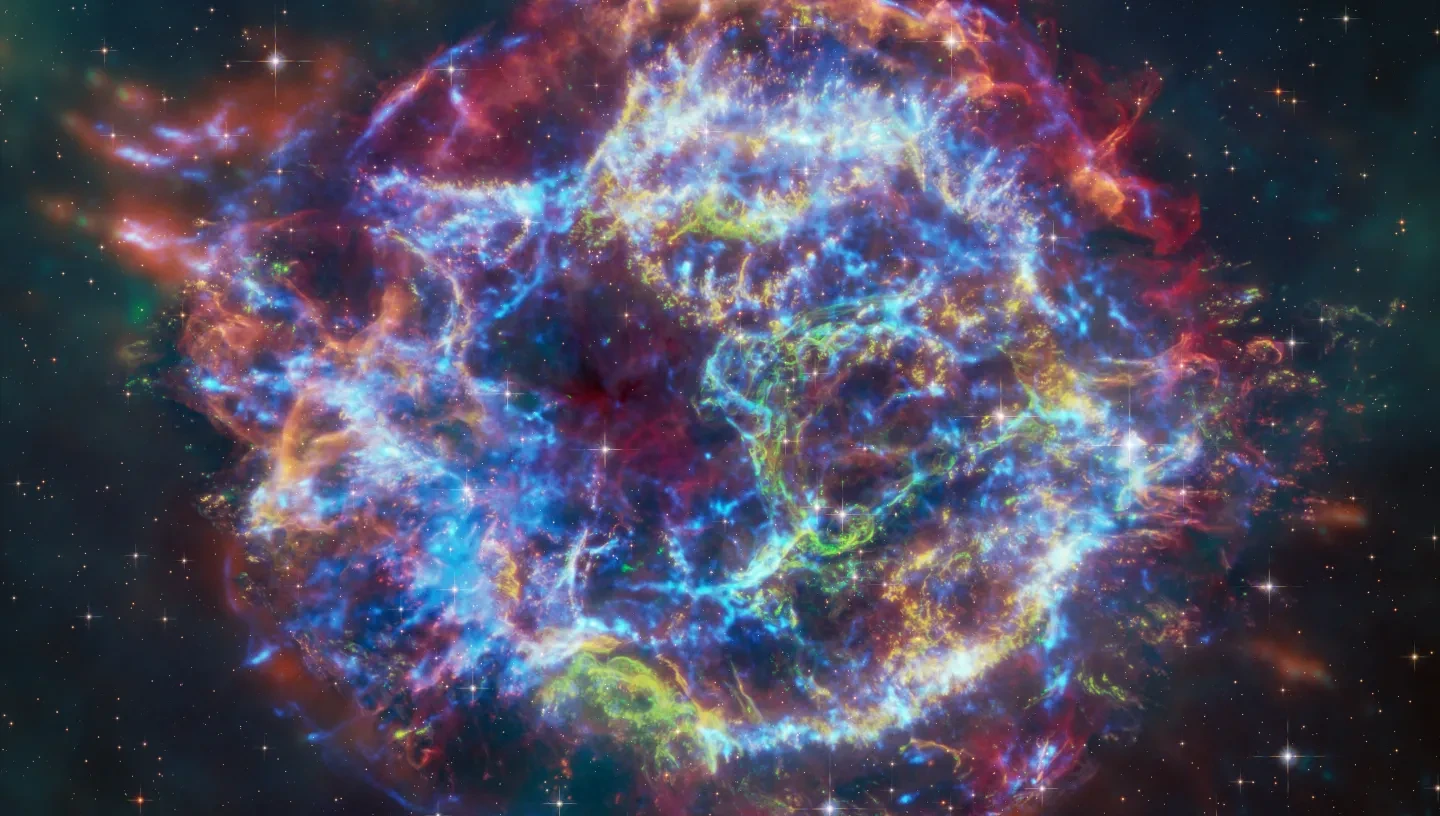
For this special edition of our Look Up! podcast, the Royal Observatory's Dr Ed Bloomer interviewed Professor Chris Lintott, astronomer and author.
Chris Lintott is a Professor of Astrophysics at the University of Oxford, where his research ranges from understanding how galaxies form and evolve, to predicting the properties of visiting interstellar asteroids.
He is Principal Investigator of the Zooniverse citizen science platform, which provides opportunities for anyone to contribute to scientific research, and which was the topic of his first book, The Crowd and the Cosmos.
Chris is best known as presenter of the BBC's long-running ‘Sky at Night’ programme, and as an accomplished lecturer and performer.
In 2023 Chris was appointed the 39th Gresham Professor of Astronomy, a post that dates back to the 16th century. In this episode Chris tells Ed about his new book, Our Accidental Universe, which discusses how astronomers often stumble across their discoveries.
Listen to the podcast episode, or read the discussion below.
Ed Bloomer: So Chris, thanks for chatting with us today. I wanted to jump straight into this idea that loads of people have that scientists work away really diligently, methodically and they uncover things piece by piece. But you've written a book talking about when that's not the case - can you tell me more about that?
Chris: Thanks for having me, it's always great to be here in Greenwich. Yeah, this was essentially why I wanted to write the book. My friend and colleague Bill Keel talks about what we call the Hollywood version of science. In this, you have a large shiny room with lots of glass everywhere and all the scientists sit around thinking and at some point somebody slaps the table, gets up and says, “my God, I've got it!”. Then we go “of course, that must be right!” and we launch a spacecraft or do an experiment or run to the telescope.
But the truth is, it's never like that, it's always messier. There are ideas competing with each other. There are surprises and the unexpected that divert even the best laid of research plans, and most of the time we're just trying to make sense of what we can understand about the Universe rather than do nicely regimented tests. So I really wanted to get away from this idea that we know what we're doing.
Another person who inspired me was Meg Urry, Director of the Yale Center for Astronomy and Astrophysics. She's the person who worked out how black holes and galaxies interact with each other - an amazing scientist. We were talking over a gin and tonic about exactly this and she said that she couldn't think of a single discovery in 20th-century astronomy, any big discovery, that had been made deliberately.
She couldn't think of a single discovery in 20th-century astronomy, any big discovery, that had been made deliberately.
Wherever you look, there's always an element of surprise, and so that inspired me too. And of course, surprises are fun - it's more fun when an object whizzes through the Solar System that we weren't expecting, and we have to scramble to deal with it or we discover something by accident. So I wanted to convey some of the fun of science as well.
Ed: OK, so what you just said then is interesting because I was going to ask: is this the sort of thing we're going to keep seeing, or do you think astronomy as a whole is changing?
Chris: You can look back and over the last century or so there have been repeated papers published by quite eminent people saying, you know, the Age of Discovery is over. Now we are physicists, now we shall do experiments, now we shall understand the Universe properly... and every time it surprises us. So I think more surprises are likely, not least because we're still looking at the Universe in new ways.
Whereas the great story of the 20th century was moving beyond the optical to radio astronomy, which brought with it all sorts of surprises to high energy astrophysics, in the 21st century I think we're moving into watching a changing universe. We're beginning to build projects that survey the sky again and again and again so we can see how it changes. And I'm pretty sure there will be unexpected objects, new phenomena and the weird and wonderful to investigate from those surveys as well.
Ed: OK. At the Royal Observatory in Greenwich we're almost 350 years old now. I was interested in whether you thought - obviously, technology changes, circumstances change, but compared to the age of the Universe this 350 years is nothing. So do you think, and maybe this is more philosophy than anything else, that the mindset of an astronomer has fundamentally changed?
Chris: Since then, I think there's been a couple of changes for sure. One is I think you have to look at what this place was set up to do, which was to map the heavens for very particular purposes. It was to map the heavens and, in so doing, to map the Earth as well as to pin down the meridian, to do navigation.
There's a sort of practical element in some ways. I think the people who originally funded and ran this place were much closer to that school kid idea of science - they were making measurements and putting them in books and reducing them for a particular purpose. And you can see, if you look at the historical record, the angst. Because they can measure how well they're doing, they know that they're competing against other observatories or they're behind on keeping up with calculations and so on.
But even here were a bunch of astronomers who were willing to be distracted by the sky. We're sitting in the South building here, and a moon of Jupiter was discovered from this building. Not because anyone was looking for a moon of Jupiter - we were looking at Jupiter and spotted something. Many of the great astronomical projects of the 19th century were not just mapping but trying to understand the objects, and that's the beginning of being surprised.
Go all the way back to 19th century debates about whether our Galaxy is unique or part of a much grander Universe. You know that that goes a long way from navigational astronomy, and Greenwich was a part of those debates and provided data that that helped as well.
Ed: You talk in your book about happy accidents. So not just accidents, but happy accidents. Is there anything we, both in astronomy and in general, could do to improve the odds of those happening to us?
Chris: Yeah, I think there's almost an attitude to life in this, and at some point somebody told me that it sounded like I was writing a self help book, you know, “How to be surprised by the Universe - the 10 rules for joy in your life.”
Because I think it is fun to be surprised. What strikes me again and again about the people whose stories I tell in the book, people like Michele Dougherty, who led the team that discovered the fountains of Enceladus, the water coming out of this moon of Saturn. Every time you talk about one of those people, they were willing to be distracted, that they weren't tied down and stuck at the day job.
Michele's team was supposed to be testing the magnetometer on Cassini, which was supposed to measure Saturn's magnetic field, and they were paying attention as their craft flew past Enceladus, not because they expected to see anything because it was a good test of whether the thing was working.
And I think lots of us would have got some sort of result, gone “great, the magnetometer works, on with the show. Now we get to explore Saturn and that's what we built it to do.” And instead Michelle and Co noticed that there was a change as the spacecraft passed Enceladus. There's no reason to expect that, there’s no funding to spend time investigating it, but it niggled away at them. From that sense of “we should probably just work out what this is," came the subsequent flybys and the beautiful images and the discovery of what might be the most favourable place to look for life in the Solar System.
If it were me I'm not sure I would have been the kind of person who went, “We've gotta work this out." I think I would have ticked the box and moved on to the next email. So I think one thing we can do is be open to surprise and willing to spend time on it. I think that's sort of true in life as well, if the unexpected hits you, then you definitely see people who are able to take that as a positive versus those of us who go: “I don’t have time to deal with this right now!”
I think one thing we can do is be open to surprise and willing to spend time on it.
Ed: And actually, we're talking about something that's sort of fun and pointing to entertaining examples. But surely that's got to be something that funding bodies and academic institutions have to understand because they've got to build it into what they’re doing?
Chris: Yeah, this is a good point. And I consider it a big problem, especially in a world in which it's getting a bit more serious and expensive to do astronomy. So for starters I should declare an interest – I’ve been working in this area for a while alongside writing the book. Actually, it turns out writing a funding proposal that says “I want to find the most unusual things in the Universe” normally gets a response, "but what are you going to find?” And if you say “Well, I don't know yet,” that doesn't go down well usually.
There are new techniques and so on, but the problem I think is in access to telescopes. In the book there's a brief mention of some of the objects that we found with the Galaxy Zoo project, where we had hundreds of thousands of people look at hundreds of thousands of galaxies online. One of the advantages of doing this is that people have time to be distracted. And the Galaxy Zoo volunteers made all sorts of discoveries, including a famous object now known as Hanny’s Voorwerp, which is this immense glowing gas cloud that tells us about what the black coal in the nearby Galaxy has been doing. But we're able to use Hubble and an orbiting X-ray telescope, and pretty much every telescope on the planet to try and chase down what this thing is.
But first of all, we needed a spectrum. We just needed something other than a picture of it, because if I had gone to Hubble or the committee that decides who uses Hubble and said “I've got a picture of a weird object and I'd like to know what it is,” I think we wouldn't have got time.
So I called a friend who happened to be on La Palma, happened to be at a big telescope, and he was setting up for the night's observing. And when you do that, you take calibration images. Guess where he pointed the telescope to take his calibration image? There was this sort of black market in telescope time and that's gone because nowadays telescope observations are automatically scheduled. It's robotic. It's much more efficient. But we've lost this ability slightly to react to surprise.
So I do think my solution is that funding agencies and particularly people who give away telescope time, something like 20% of it should be randomly allocated for fun - maybe you have to justify what you want to do but not what the results are going to be. There's a great example of this, actually, which I didn't know about until I started writing which was: almost the most famous image of Hubble’s 30-year career at this point is the Hubble Deep Field.
This deep image showed tens of thousands of distant galaxies right at the beginning of the Universe’s story. I hadn't realised that that image was controversial at the time. The people who wanted to use Hubble to do that, to stare at a blank bit of the sky, didn't get the time when they first applied because very serious, very eminent professional astronomers had made a mistake.
They'd said that Hubble won't discover a single new Galaxy, even if you do this. So they thought this was a pointless endeavour and the reason they made that mistake was that they assumed the distant past Universe would be like today. And it's true if you take the Milky Way and you drop it 13 billion years ago, we don't see it in the deep field. But we didn't know that there was this glorious firework display of star formation going on in the early Universe.
So it was only done on the whim of a director of the Space Telescope Science Institute, who had his own time. He said, sure, we'll do this, and then they released the data. So that's probably the most surprising to us people who know astronomy. That's the most surprising surprise in the book because it just seems such an obvious thing to do - this is what you do with any new telescope now, you take a deep field. But it was hugely controversial.
Ed: Wow. Have you discovered anything by accident? Or maybe not discovery, but have maybe any insights come to you from a direction that you weren’t thinking about at all?
Chris: Well the citizen science thing with Galaxy Zoo and similar projects have produced a wonderful array of surprises, but the one that still sticks in the mind is what tends to be known as Tabby’s star. It's Boyajian's star most properly, which is this star that was observed by the Kepler Space Telescope and whose brightness changed apparently randomly, sometimes by as much as 20% over the course of a few hours. So it was like if you had a lightbulb with a loose connection. Then this thing was flashing - and it behaved like no other star we'd ever seen.
This is a good example of the kind of research I'm talking about, because we were supposed to be trying to find planets, and here we have this misbehaving star that our volunteers had found. And so we did the, “what is it? What could it possibly be?” And you know, we started with obvious stuff like it's the camera malfunctioning, looking at which pixel had observed the star in case there was a dead pixel on the camera. We looked for infrared in case there was some dust around the star and so on.
We eventually published a paper that called it the WTF star, which we explained stood for “Where’s The Flux” because it's disappearing and we basically said we don't know what it is. We made some half sensible suggestion that it might be comets in orbit around the star. It's not comets, but the reason it's famous is that some other researchers, led by a guy called Jason Wright, published a paper that said that this star could have an alien mega structure around it.
Ed: Right, OK. I was wondering why this was familiar, I'd heard that.
Chris: Yeah. So the idea is that if you're an alien civilization, you build a fleet of orbiting solar panels around the star to power your civilization. We'd see this signature of solar panels getting in the way at the star. And it’s interesting because that's not a stupid idea. This sort of structure, sometimes known as a Dyson sphere or Dyson swarm, goes way back, it's not a stupid idea.
Is it a scientific proposition on the one hand? It suffers from a flaw which our comet idea did too, which is that you could explain any pattern you like with this idea, because you just move your alien solar panels around as you like. So that's tricky. Or at least it's only weak evidence that this is a good idea. But, we did eventually test it - when the star dipped again, we were ready.
We were monitoring it, we went and observed it. Actually, people all over the world observed it for us, using an old-fashioned medium called Twitter to organise the observations back in the good old days. We showed that how much the star dipped changed depending on whether you had a camera sensitive to red light or blue light, and so it's not a solid object that's getting in the way, it's dust or something like that.
The mystery of this star is still going on. Now it must be nearly the 10th anniversary, if it's not already, and we're still arguing about exactly what's causing this. But we have shown it's not an alien fleet of solar panels.
Ed: Slightly disappointing in a sort of way!
Chris: Yeah, the book was originally called “It's Never Aliens” and it was going to be all the things that turned out not to be aliens, but that idea was killed by a publisher.
Ed: That's fair enough. And just something else you've talked about, Galaxy Zoo. For people who don't know, you were instrumental in the creation of Zooniverse, but could you just tell us a little bit about what that is as a big project?
Chris: Yeah. So these are slightly original, slightly desperate solutions to the problem of having too much data. In Galaxy Zoo, we had nearly a million images of galaxies. We wanted to sort them out by shape; divide spiral galaxies from elliptical galaxies. In 2006 and 2007, people were much better - at least PhD student Kevin Schawinsky was much better - at doing this than a computer was. And so we had the problem. Kevin didn't want to look at 950,000 images of galaxies. He did 50,000, which was a heroic effort, but incidentally, he saw Hanny's Voorwerp in his sample. But he didn't notice or didn't stop and say “that's unusual. I should pay attention.” So it's a really good example of wanting to be surprised.
We put the images online and asked for help and we got this enormous response. Within a day we were getting 70,000 classifications an hour. Those results have been hugely valuable.
We're now looking at images from the James Webb Space Telescope and new surveys of the sky. But it also turned out that people who like looking at galaxies did so because they wanted to help, and therefore they're interested in all sorts of projects.
Early on, we did a project on the Moon, working with people here at Greenwich. We also did a project called Solar Storm Watch, looking at images of the Sun and solar activity, but we also transcribed ancient documents, measuring cell types. Counting penguins is very popular. And it launched this Zooniverse platform that now has about 200 live projects covering all sorts of science and humanities.
Ed: And just to reiterate, this is a way for everybody to get involved, right?
Chris: Yeah, the projects instruct you themselves, but it shouldn't take more than a few minutes before you're actually contributing to science. And this is work that really needs to be done.
Without people's help we don't get the most out of these data sets. We often have machines in the loop as well, but we still find the combination of online people plus machines outperforms either and helps us find the really unusual stuff.
Ed: Cool. Looking forward, what are projects or potential projects that are happening, being built, or at least in the planning stages, in the field of astronomy that you're excited about? Or I suppose, what should we be excited about over the next couple of years?
Chris: So the thing I hope you'll be hearing a lot about is the Vera Rubin Observatory, which has been under construction for the last decade, which I've been slightly involved in for most of that time. Rubin's an amazing project - it's as big as the biggest telescopes in the world today.
So it's an 8 metre, but it's got a very wide field of view and the largest digital camera ever made is going to be installed on the telescope. Its mission is to make a movie of the sky. It's going to scan the sky every three nights and it'll do two things with those images: one is that they'll stack up and actually make an incredibly deep image of the sky, which will be hugely revealing, particularly for those of us who like galaxies. We're going to see all sorts of structure and detail in and around and between the galaxies that we haven't seen before.
But it's also going to issue alerts whenever anything changes, so anything that moves or flickers or brightens or fades in the sky. To give you a scale, it's about 30 terabytes of images a night. And we think, though we haven't tried it yet, that we're going to get about 10 million alerts at night. So those of us who care about surprise are working very hard to try and make sure that somewhere within that 10 million, there’ll be the truly unexpected object in the Solar System, a star that’s misbehaving, a galaxy that’s unusual. So we hope we'll find some of those as well.
But Rubin will produce all of these alerts, and we're going to need help to sort through them. The imaging is going to be beautiful, understandably, so I think it will be transformative in how we think about the sky. I think we'll suddenly find ourselves talking about what happened in the Universe yesterday, rather than this slow, eternal, unchanging sphere that we often think of the cosmos as. I think we're going to get a shock when we are monitoring it in this brand new way.
Ed: Amazing. Casting even further out than that, then, what's a next-generation problem we should be looking to solve or boundary that we want to push? You know, if time and money were no object.
Chris: Well, we're already planning the next generation of space telescopes, and there's something called the Habitable Worlds Observatory, which is a pure marketing name. I think it'll probably get a better name, but this is an 8-metre telescope in space, so this is a mirror that's four times bigger than Hubble’s. We need new rockets to launch that, we need new funding to do that.
With that, you could really start to do all sorts of things, but one of the main reasons for launching it would be to see the atmospheres of planets around nearby stars and begin to get to the point where you could identify Earth-like signatures, so maybe even signatures that would tell you that there was life there around maybe the 100 nearest planets or so. No, we haven't discovered those planets yet, and it's probably another 20 or 30 years before this thing flies.
It depends primarily on American politicians and funding, which is uncertain as a landscape right now, though we in Europe will be involved too. I think that that's a really exciting thing to think about: what you could do with that telescope, even that there are simulated images floating around.
I think probably the best way to illustrate its powers is that I've seen simulated images of what such a telescope would produce if it looked at Jupiter and it's like having another Voyager probe -the quality is genuinely that good. So it'll put us right next to the giant planets in our system as well. And the same is true if you look at star-forming regions or galaxies, it would be absolutely stunning.
Ed: And is it designed that it could do that?
Chris: Yes, it's multi-purpose. So this is crucial – astronomers build observatories. It's a multi-purpose system, just as Hubble is or JWST is, so it would do all sorts of science.
Ed: So things like Uranus and Neptune, which are relatively speaking much less well known.
Chris: Yeah, we've not really got any idea what the weather patterns are. We see the giant spot and Neptune come and go, but that's about it. If people haven't seen the JWST images of those planets, they're stunning. But this would be even better, and in the optical wavelength, so it's a multi-purpose observatory. I think the cost is low, $20 billion or something like that? But it's spent over 30 years, which makes it relatively cheap. As I always tell people, you spend the money here, it's not like we send the money to space.
Ed: No, absolutely.
Chris: It would be a good a good investment, I think.
Ed: Just to finish up, you yourself have had a really varied career within the broad umbrella of astronomy, and there are loads of people that think astronomy is not for them. I was wondering if you could tell us a little bit about how you got started, or if there's any encouragement or advice you can give to people to make it clear that it's a worthwhile thing for anybody to get into.
Chris: Yeah, I think there's a few things there. So the first thing I'd say is that astronomy is for everyone, whether or not you want to make it your career. I think it is a science that one can dabble in and that's the great joy of it actually, whether it's citizen science projects like the Zooniverse, or listening to podcasts like this one, or visiting the observatory, or keeping up with the news from Rubin or Hubble, or JWST.
I'd say that astronomy is for everyone, whether or not you want to make it your career. I think it is a science that one can dabble in, and that's the great joy of it actually.
Similarly, buying an interesting book, dabbling in astronomy is fine. However, for those who want to do it as a career, I had a fairly conventional astronomical career, though I have been distracted along the way. I grew up as a small kid looking through telescopes and caring about the Universe and staring up at the skies and wondering if there were exoplanets there and how we might find out about them.
And then I did a physics degree and essentially became a physicist, but a distracted one. The one thing that I really want to say is that whenever you hear about a mission, say the ESA’s JUICE mission to Europa, to see if, or what conditions prevail in the ocean within that icy moon, wherever you hear about a telescope, like Rubin; there are people who contributed to that, who did project management, who did software development, who did engineering, who built the camera, who did the construction on the site.
There are lots of ways to get involved in space and astronomy that aren't being a physicist turned astronomer. And so I think for many people who want to contribute to this really exciting time when we're exploring the cosmos, I think one of the questions you can ask is: what skills do you have or do you want to develop, and what can a space career look like for you?
There are really good resources online to help people connect with companies and with agencies like ESA and in the UK, the UK Space Agency who are looking for people with all of those skills. So yes, being a scientist, it's great fun. And yes, getting paid to do this stuff is the biggest privilege of my life that I'd recommend to anyone. But I do think there are many other ways to be an astronomer and take part in this surprising adventure.
Ed: Great. Well, Chris, thank you so much for coming in and speaking to us. Thank you!
Chris: My pleasure.
Chris hosts the ‘Dog Stars’ podcast, alongside his rescued lurcher Mr Max – we encourage you to check this out too!

About Chris Lintott
Chris Lintott is a Professor of Astrophysics at the University of Oxford, where his research ranges from understanding how galaxies form and evolve, to predicting the properties of visiting interstellar asteroids.
He is Principal Investigator of the Zooniverse citizen science platform, which provides opportunities for anyone to contribute to scientific research, and which was the topic of his first book, The Crowd and the Cosmos.
Chris is best known as presenter of the BBC's long-running ‘Sky at Night’ programme, and as an accomplished lecturer and performer in venues from music festivals to planetaria.
Header image: Cassiopeia A by James Webb, Image credit: X-ray: NASA/CXC/SAO; Optical: NASA/ESA/STScI; IR: NASA/ESA/CSA/STScI/Milisavljevic et al., NASA/JPL/CalTech; Image Processing: NASA/CXC/SAO/J. Schmidt and K. Arcand
